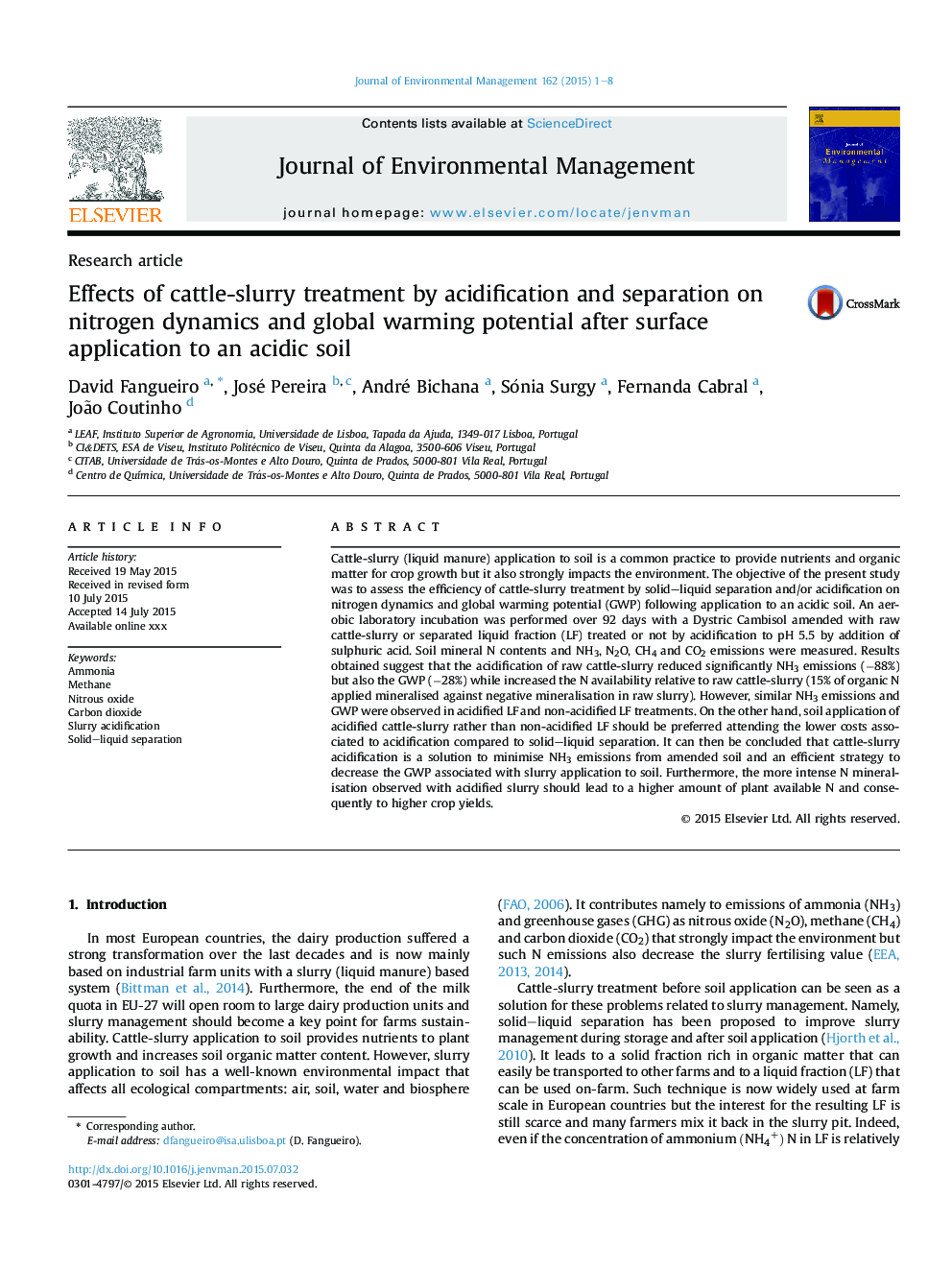| Article ID | Journal | Published Year | Pages | File Type |
|---|---|---|---|---|
| 7481421 | Journal of Environmental Management | 2015 | 8 Pages |
Abstract
Cattle-slurry (liquid manure) application to soil is a common practice to provide nutrients and organic matter for crop growth but it also strongly impacts the environment. The objective of the present study was to assess the efficiency of cattle-slurry treatment by solid-liquid separation and/or acidification on nitrogen dynamics and global warming potential (GWP) following application to an acidic soil. An aerobic laboratory incubation was performed over 92 days with a Dystric Cambisol amended with raw cattle-slurry or separated liquid fraction (LF) treated or not by acidification to pH 5.5 by addition of sulphuric acid. Soil mineral N contents and NH3, N2O, CH4 and CO2 emissions were measured. Results obtained suggest that the acidification of raw cattle-slurry reduced significantly NH3 emissions (â88%) but also the GWP (â28%) while increased the N availability relative to raw cattle-slurry (15% of organic N applied mineralised against negative mineralisation in raw slurry). However, similar NH3 emissions and GWP were observed in acidified LF and non-acidified LF treatments. On the other hand, soil application of acidified cattle-slurry rather than non-acidified LF should be preferred attending the lower costs associated to acidification compared to solid-liquid separation. It can then be concluded that cattle-slurry acidification is a solution to minimise NH3 emissions from amended soil and an efficient strategy to decrease the GWP associated with slurry application to soil. Furthermore, the more intense N mineralisation observed with acidified slurry should lead to a higher amount of plant available N and consequently to higher crop yields.
Related Topics
Physical Sciences and Engineering
Energy
Renewable Energy, Sustainability and the Environment
Authors
David Fangueiro, José Pereira, André Bichana, Sónia Surgy, Fernanda Cabral, João Coutinho,
